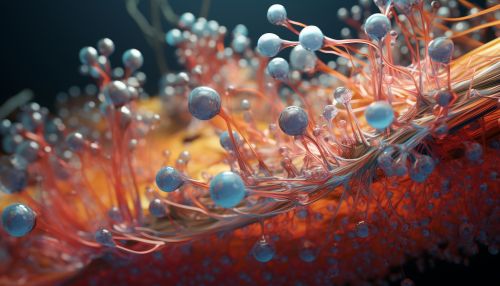The Role of Proteomics in Understanding Disease Pathways
Introduction
Proteomics, the large-scale study of proteins, plays a crucial role in understanding disease pathways. This field of study involves the systematic identification and quantification of the protein content of cells, tissues, and organisms. It provides insights into the functional network of proteins, their interactions, and their modifications, which are essential in comprehending the molecular mechanisms of diseases.


The Role of Proteomics
Proteomics is a powerful tool for understanding the pathophysiology of diseases. It allows for the identification of disease-specific proteins, which can serve as potential biomarkers for disease diagnosis, prognosis, and therapeutic targets. Proteomics also aids in the discovery of novel disease pathways, which can lead to the development of new therapeutic strategies.
Disease Biomarkers
A significant application of proteomics in disease understanding is the identification of disease biomarkers. Biomarkers are biological molecules found in blood, other body fluids, or tissues that signal an abnormal condition or disease. Proteomics technologies, such as mass spectrometry and protein microarrays, have been instrumental in the discovery of numerous disease biomarkers.
Therapeutic Targets
Proteomics can also identify potential therapeutic targets. By comparing the protein profiles of diseased and healthy tissues, researchers can identify proteins that are overexpressed or underexpressed in disease conditions. These proteins can serve as targets for drug development.
Disease Pathways
Understanding disease pathways is another critical aspect of proteomics. By studying the interactions and modifications of proteins, researchers can map out the molecular pathways that lead to disease. This knowledge can help in the development of targeted therapies that interrupt these pathways.
Proteomics Techniques
Several techniques are used in proteomics to study proteins and their role in disease pathways. These include mass spectrometry, protein microarrays, and two-dimensional gel electrophoresis.
Mass Spectrometry
Mass spectrometry is a powerful tool for protein identification and quantification. It can identify proteins based on their mass-to-charge ratio and can quantify proteins by comparing the intensity of their mass spectra.
Protein Microarrays
Protein microarrays are used to study protein-protein interactions, protein-DNA interactions, and protein-ligand interactions. They allow for the simultaneous analysis of thousands of proteins, making them a powerful tool for proteomics research.
Two-Dimensional Gel Electrophoresis
Two-dimensional gel electrophoresis is a technique used to separate proteins based on their isoelectric point and molecular weight. It is often used in combination with mass spectrometry for protein identification.
Challenges and Future Directions
Despite the significant advances in proteomics, several challenges remain. These include the complexity of the proteome, the dynamic nature of proteins, and the difficulty in detecting low-abundance proteins. However, with the development of more advanced technologies and analytical methods, it is expected that these challenges will be overcome.
The future of proteomics in understanding disease pathways is promising. With the continued advancement of proteomics technologies, it is anticipated that more disease-specific proteins and pathways will be discovered. This will undoubtedly lead to the development of more effective diagnostic tools and therapeutic strategies.
